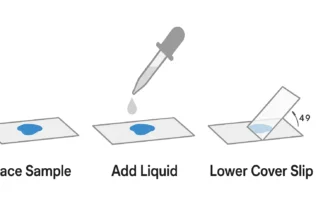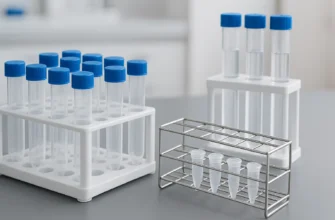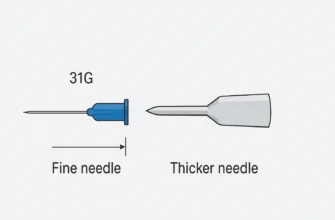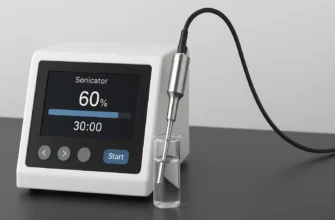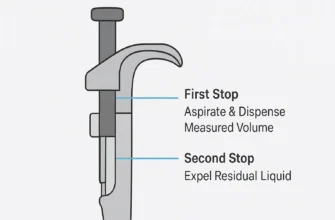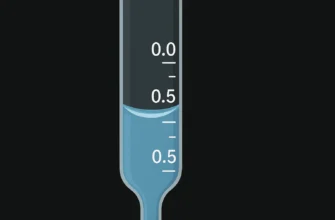Understanding the Buret Stopcock: A Complete Guide
Key Highlights
A buret stopcock is a critical valve that precisely controls the flow of solution from a burette. It plays an essential role in laboratory titration procedures, allowing for drop-by-drop addition of a titrant to determine the concentration of unknown substances. Achieving accurate measurements hinges on the smooth and leak-free operation of the stopcock. The two main types are the traditional glass stopcock and the highly preferred PTFE (Polytetrafluoroethylene) stopcock. Lab-grade burettes with stopcocks are available from scientific equipment suppliers including Fisher Scientific, Sigma-Aldrich (Millipore Sigma), VWR International (Avantor), and Thermo Fisher Scientific. Proper cleaning, maintenance, and storage are vital to prevent leaks and ensure reliable results.
Introduction
Precision is everything in quantitative laboratory analysis. The buret stopcock, a small valve at the bottom of the burette, is the key component that enables dispensing liquids with incredible control. This essential piece of laboratory glassware allows researchers to perform accurate titrations, ensuring results are repeatable and correct. Modern burettes are manufactured from borosilicate glass and calibrated to deliver (TD, EX) solutions at 20°C according to ASTM E-287 Class A specifications.
Overview of the Buret Stopcock in Laboratory Use
The primary function of a buret stopcock is to act as a precision valve, giving complete control over solution flow from the burette. Operators can open it fully for a steady stream or adjust it to release a single drop. This level of control makes burettes indispensable for titration work. Modern burettes typically feature PTFE stopcocks, which offer smooth operation and excellent chemical resistance. Most Class A burettes have a standardized bore size of 2mm and come with batch certificates verifying their calibration accuracy.
Key Functions and Role During Titration
During titration, the stopcock provides critical control for determining the concentration of an unknown substance (analyte) by reacting it with a solution of known concentration (titrant). The stopcock allows precise addition of titrant from the burette into the flask containing the analyte. The goal is to reach the reaction’s endpoint, often signaled by a color change from an indicator, without overshooting. As the endpoint approaches, the stopcock enables slowing the flow to a single drop at a time. This careful addition is crucial for determining the exact volume of titrant used, which through stoichiometric calculations reveals the concentration of the analyte.
Importance of Precise Flow Control
Precise flow control differentiates successful experiments from those with skewed results. The ability to add liquid in controlled increments is essential for accurate measurements. When recording the final reading from the burette, measurements are taken from the bottom of the meniscus at eye level to prevent parallax error. Even a tiny excess amount of liquid can significantly affect calculations.
A well-functioning stopcock allows stopping the flow at the exact moment the indicator changes color, signaling the equivalence point. This prevents over-titration, where excess titrant ruins the measurement.
Precision is critical because it ensures stopping exactly at the endpoint for accurate final readings, prevents chemical waste and experimental restarts, allows addition of partial drops near the endpoint for ultimate accuracy, and builds confidence in calculated concentrations.
Types of Buret Stopcocks
The two most common types encountered in laboratory glassware are the traditional glass stopcock and the modern PTFE stopcock. The term “key stopcock” refers to the plug component that rotates to control flow. Each type has distinct characteristics, advantages, and disadvantages related to material properties, maintenance requirements, and performance. Understanding these differences is essential for selecting appropriate equipment for specific laboratory needs.
PTFE vs Glass Stopcock Materials
The stopcock material significantly impacts performance in laboratory titration procedures. A glass stopcock is manufactured from ground borosilicate glass, designed to fit precisely into the burette barrel. While functional, it requires a thin layer of stopcock grease to seal properly and turn smoothly. This grease can contaminate solutions or cause the stopcock to “freeze” or seize over time.
PTFE stopcocks are made from Polytetrafluoroethylene, a polymer known for its non-stick properties and exceptional chemical resistance. PTFE is self-lubricating, requiring no grease application, which eliminates a major contamination source and ensures smooth, reliable operation. This improved durability and ease of use explain why PTFE has become the standard for most modern burettes. PTFE maintains its properties even after prolonged exposure to aggressive chemicals including 3% HCl, 3% NaOH, and 3% NaClO solutions.
| Feature | PTFE Stopcock | Glass Stopcock |
|---|---|---|
| Material | Polytetrafluoroethylene (Plastic) | Borosilicate Glass |
| Lubrication | Not required (self-lubricating) | Grease necessary |
| Contamination Risk | Very low | High (from grease) |
| Chemical Resistance | Excellent for acids, bases, solvents | Good, but grease may react |
| Durability | High; resistant to freezing/seizing | Can stick or freeze over time |
| Maintenance | Minimal | Regular lubrication required |
Identifying and Choosing the Right Stopcock Type
Visual identification of stopcock type is straightforward. A PTFE key stopcock typically appears as a white, red, or colored plastic component that fits into the glass barrel and is secured by a threaded retaining nut. A glass stopcock is made entirely of glass and appears as a seamless component of the burette.
When selecting a burette, the stopcock type is a major consideration. The bore size is standardized and matched to the burette capacity (typically 2mm for most laboratory burettes), so users select the complete burette system rather than individual components.
Consider these factors when choosing chemical compatibility, as PTFE resists most laboratory chemicals making it safer and more versatile. For applications requiring minimal contamination, PTFE stopcocks are essential. PTFE stopcocks turn smoothly and are less prone to leaks or sticking, reducing measurement errors. Burettes meeting ASTM E-287 Class A specifications provide the highest accuracy with tolerances of ±0.02 to ±0.05 mL depending on capacity.
Cleaning, Maintenance, and Troubleshooting Tips
Proper cleaning and maintenance of the stopcock are essential for reliable burette operation. A dirty or poorly maintained stopcock causes leaks, inconsistent solution flow, or contamination, all compromising results. Regular care after each use ensures smooth operation and perfect sealing. Taking moments to clean components with deionized or distilled water and inspect for issues prevents future problems.
Proper Cleaning Methods for Buret Stopcocks
Effective cleaning ensures equipment readiness for subsequent use. Begin by draining remaining solution from the burette into a dedicated waste beaker. Rinse the burette interior thoroughly with tap water followed by distilled or deionized water, allowing drainage through the stopcock.
For thorough cleaning of PTFE stopcocks, disassembly is straightforward. Carefully unscrew the retaining nut and remove the key. Wash the key and stopcock barrel interior with appropriate cleaning solution or laboratory detergent, followed by multiple rinses with distilled water to remove all residue.
Cleaning checklist: Drain all remaining reagents into a waste beaker. Rinse the burette and stopcock with tap water, then distilled water multiple times. Before use, perform a final rinse with small amounts of the titrant solution you will use (this conditions the burette and prevents dilution). Ensure all parts are completely dry and correctly reassembled before storage. Never use bristled brushes on burette interiors as they may scratch the glass.
Fixing and Preventing Leaks
A leaking stopcock is frustrating and can ruin experimental accuracy. If solution level drops when the stopcock is closed, a leak exists. With PTFE stopcocks, the most common cause is a loose retaining nut. Gently tighten the nut until leakage stops, but avoid overtightening as this makes the stopcock difficult to turn.
Debris trapped in the stopcock can prevent proper sealing. Disassembling and thoroughly cleaning the stopcock usually resolves this issue. Always check for and remove air bubbles trapped in the tip before starting, as bubbles can be displaced during titration causing volume reading errors. To remove air bubbles, open the stopcock fully for a moment to flush the tip.
Leak prevention requires ensuring the stopcock is clean and correctly assembled before filling the burette. Routine checks before each use save time and ensure measurement accuracy.
Proper Storage Practices
Store burettes in an upright position in designated burette clamps or cabinets. Ensure the stopcock is positioned securely to prevent falling and breakage. Store with the stopcock slightly open to prevent sticking, particularly important for glass stopcocks but beneficial for PTFE stopcocks as well. Always cover burette tips with clean parafilm, butter paper, or aluminum foil when not in use to prevent dust contamination. Maintain storage in clean, dry conditions with temperatures between -20°C to +50°C and relative humidity between 5% and 95%.
Conclusion
Understanding buret stopcock intricacies is vital for laboratory work. From key functions during titration to choosing appropriate materials, mastering these details greatly enhances precision and efficiency in experiments. Whether using PTFE or glass stopcocks, proper maintenance through cleaning, troubleshooting, and correct storage ensures optimal performance and longevity. Modern PTFE stopcocks have largely replaced glass stopcocks due to their superior chemical resistance, self-lubricating properties, and reduced contamination risk. By implementing these best practices and selecting equipment meeting ASTM E-287 Class A specifications, laboratories can achieve reliable, accurate analytical results.
Frequently Asked Questions
Why are PTFE stopcocks preferred in burettes?
PTFE stopcocks are preferred because they are self-lubricating, eliminating the need for grease that can contaminate samples. Their superior chemical resistance and durability compared to traditional borosilicate glass stopcocks prevent seizing and freezing. PTFE maintains its properties even after prolonged exposure to aggressive chemicals, ensuring smooth operation and more accurate measurements across all types of laboratory applications.
How do you safely install or replace a buret stopcock?
For PTFE stopcocks, installation is straightforward. Carefully unscrew the colored retaining nut, insert the key stopcock into the barrel ensuring proper alignment, and re-tighten the nut until snug. The nut should be tight enough to prevent leaks but still allow the key to turn smoothly without excessive force. Always test with distilled water before starting laboratory titration procedures to verify proper sealing and operation. For glass stopcocks, ensure matching identification marks align, apply a thin layer of stopcock grease, and insert with a slight twisting motion.
What is the standard bore size for burette stopcocks?
Burette bore size is standardized and matched to the burette’s total capacity rather than being user-selectable. Most laboratory burettes feature a 2mm bore size, which is the industry standard for Class A burettes ranging from 10 mL to 100 mL capacity. Specialized applications may use different bore sizes such as 1.5mm for smaller capacity burettes. The bore size affects the flow rate and precision, so manufacturers calibrate each burette as a complete system including the stopcock and tip to meet ASTM E-287 specifications.




